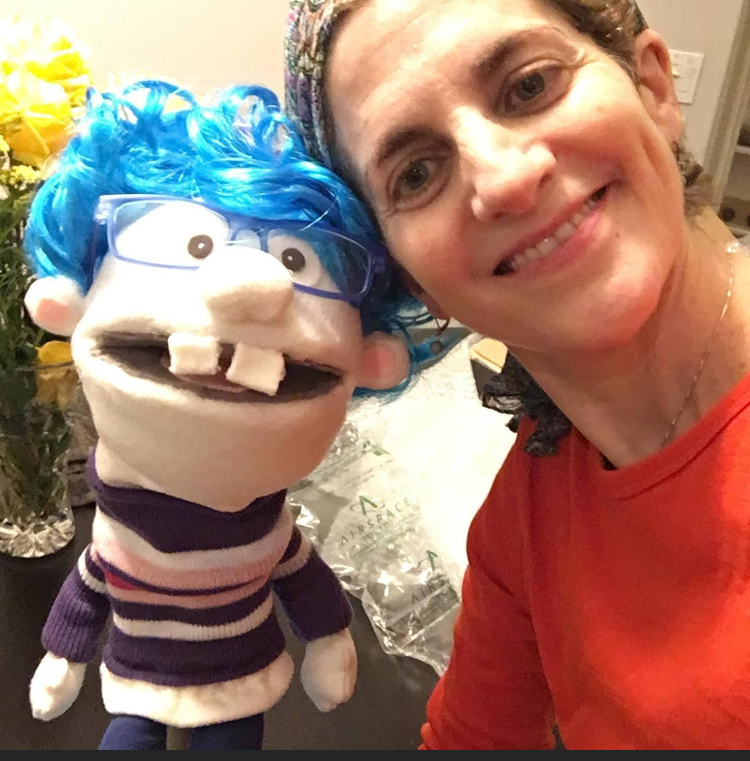8 Tantrum Taming Skills for Helping Autistic Children
As I enter the house, she’s screaming. A 3-year-old with a full-blown meltdown meets me at the door. Well, her mom meets me with the I’m-going-to-pull-my-hair-out look with her sweet, beautiful, screaming child rolling on the floor behind her. A little background. We had ordered her daughter's orthotics and mom tried putting them on a few minutes before I arrived. Now, generally, orthotics don’t set off a full-blown meltdown, but with an autistic child and a good dose of sensory processing disorder, just about any offensive sensory input can trigger a meltdown.
I also have to be honest. I’ve lost my temper a few times. My children often remind me of those less-than-stellar parenting moments. I mean who hasn’t? And my trigger? Auditory overstimulation: a tantrum, the sibling scream-and-shout fest, the screeching child.
 So maybe I’m not the expert in advising on Tantrum Taming Skills for autistic children. But by default, I have had to deal with a few tantrums from my own children and with children with whom I work as a physical therapist. I believe I’ve handled the latter much better. And the key was not necessarily managing the child. As I’ve learned, the key is managing myself. I am, of course, more emotionally removed from other people’s children and not as personally involved. And that distance may be a key concept. But with that said, if I had a few more tips when I was raising my children, I may have had fewer gray hairs and a healthier outcome to what at the time seemed like an unsurpassable, unattainable climb up emotional Everest.
So maybe I’m not the expert in advising on Tantrum Taming Skills for autistic children. But by default, I have had to deal with a few tantrums from my own children and with children with whom I work as a physical therapist. I believe I’ve handled the latter much better. And the key was not necessarily managing the child. As I’ve learned, the key is managing myself. I am, of course, more emotionally removed from other people’s children and not as personally involved. And that distance may be a key concept. But with that said, if I had a few more tips when I was raising my children, I may have had fewer gray hairs and a healthier outcome to what at the time seemed like an unsurpassable, unattainable climb up emotional Everest.
Let’s take a look at a few tantrum-taming skills for autistic children that may help you or perhaps someone you know.
Stay Calm
That is be an observer. For many, the first response to a tantrum is to jump in and try to fix the situation. Sometimes we are downright embarrassed. Sometimes we just can’t tolerate the noise. And honestly, by the time a tantrum is occurring, your child’s brain has left that place of reason. Most likely, yours has too. At this point, a few more seconds or minutes while you take a step back and take an objective look at what is occurring, might give you some perspective. It may allow you to take whatever action you choose to take or not to take with a calm approach. This calm approach, though it may not fix the current situation immediately, will, in addition, teach your child how to handle stress. It is probably the best modeling you can offer your child. This space in time will allow you to use your frontal lobe (the creative side of your brain) as opposed to your amygdala (the fight-or-flight part of your brain). Take ten deep breaths. Take a moment or a few. Stay calm. Approach this from a place of…
Curiosity
Too often, we as parents jump into a critical role when our children are not doing as we think they should. If this is you, try to engage the motto of “curious, not critical.” This can often help avoid tantrums that result from a battle of the wills. A bit of curiosity can go a long way to understanding why a child is craving, wanting, or resisting something. This can be very effective at all ages, but particularly with older children. You may be able to reason and discuss patterns when they are not actively involved with a tantrum. But even nonverbal children can offer insight into their patterns if you can become curious and not critical. This works very well too if we can use this approach when viewing other children and people whom we don’t know so well, who are different than us. If we can work on this at home, we can apply it to other situations.
Be Proactive
Are there triggers that set your child off? Is there a way to avoid those or to work on a soft approach toward the trigger? Does visiting the dentist set off a tantrum? Can you read a book about it, or show your child a photo of the dentist and talk about it before you visit? Can you get them a special toothbrush? Does brushing teeth set them off? Can you do something to make the bathroom and the toothbrushing experience more engaging? Soft music? A special toothbrush? Time to play with the water? An ounce of preparation can go a long way toward avoiding a full tantrum.
Put Your Own Oxygen Mask on First
This is what we call self-care. And though it is best to address your own needs when there is no active tantrum, sometimes you may need to put your own oxygen mask on, much like the advice given on airplanes, before tending to your child’s tantrum. I know I can handle a screaming child much better if I’ve hydrated and had a snack before I go to a physical therapy session. Sometimes you may need to just step away, go for a 5-minute walk, and come back. Or maybe you need to just go sit in the closet. Some self-care ideas that may help you manage your own emotions better are things like:
 regular exercise
regular exercise- social time
- talking to a friend
- a walk in the woods
- listening to music
- or any other hobby you enjoy.
For married couples, having time with each other is crucial care toward parenting a child with special needs. Making sure these are a regular part of your day and week can help you bring your best to parenting. And it is not at the cost of your child’s well-being. It will enhance it.
Check the Sensory Diet
Do you have a sensory diet? Some of the ideas mentioned above may be a part of yours. I know I need time outside. I also like a weighted blanket. I don’t like tags in my shirt and I like clothing that hugs my body. We each have different needs. Get to know your sensory preferences so you can understand those of your child. Does your child need to bite or chew? Do they like certain types of music? Soft materials? Weight or compression? Is your home overstimulating? Too much noise, furniture, and toys lying around? Is there a box of sensory tools or toys that you can keep for easy access? Is your child spending too much time indoors and needing regular scheduled outdoor time? Be sure that their sensory diet is being met throughout the day every day to help minimize meltdowns.
Offer Visual Prompts
I love this idea. Using visual cards, words, or prompts can help children manage their way through a tantrum or avoid one. For example, children can use the green-yellow-red light technique. This is where you ask them how they are feeling and they can choose green (feel good enough to concentrate, do school work, etc.), yellow (starting to feel not-so-great and may need a break or sensory input), and red (I’m mad and about to have a full blow tantrum). There are a variety of ways to work this and for each color, you can have activities that match to help stay in the color (green) or get out of the color (yellow or red). For example, if a child is in yellow, they may just need a break or a walk. If they are in red, they may need to roll around on the floor, jump up and down, or hide in a tent or under a blanket. The idea is to teach children to advocate for their own needs and feelings and to recognize them early on.
Take It Outside
I’ve already mentioned this, but there is different energy outside than inside your home. Being outside offers more time and space to move, the ability to feel the sun or rain, play with water, smell a flower, kick a ball, run, go for a walk, or ride a bike. All these activities use large motor muscles, trigger balance reactions, and distant vision. The opposite occurs when we are inside, using smaller, fine motor skills, concentrating, sitting on a couch, lounging, and having loads of screen time. I see too many children who after school are on their devices. Every day. For long periods. I can tell you it is really difficult to get a child who has been watching TV or playing on a tablet to get up and participate in a physical therapy session. So my go-to strategy is to go outside first. It works, almost every time. So I’m just going to say: GO OUTSIDE. Taking a screaming child outside, may sometimes just stop a tantrum right in its tracks.
Go Electronic-Free
With that said, electronics are a part of our life. How are you managing it? Even for non-verbal children who need electronic aids, they can be managed. And for older children, social media time can be limited. How about a day off each week? A coveted, no-screen day. The time can be replaced with family game time, reading out loud or silently, art activities, baking together, and of course, going outside.
 Remember, life is a constant learning experience. As a psychologist once asked me, “So you think you figured it all out?” It’s not so simple. We are learning every day. Sometimes the same lessons, over and over. It’s okay. It’s part of the process of growing and evolving. However, if your child is having constant melt-downs, it may be time to reach out for a psychoeducational evaluation, to a behavioral specialist or psychologist. These professionals specialize and can help not only minimize meltdowns but to help you find the joy in living and raising well-adjusted, motivated, happy children.
Remember, life is a constant learning experience. As a psychologist once asked me, “So you think you figured it all out?” It’s not so simple. We are learning every day. Sometimes the same lessons, over and over. It’s okay. It’s part of the process of growing and evolving. However, if your child is having constant melt-downs, it may be time to reach out for a psychoeducational evaluation, to a behavioral specialist or psychologist. These professionals specialize and can help not only minimize meltdowns but to help you find the joy in living and raising well-adjusted, motivated, happy children.

Ilana Danneman, PT
Ilana (or “Miss Ilana” as her clients refer to her) is a pediatric physical therapist and the owner of Special Needs in Motion. She works in Atlanta, Georgia and produces a bimonthly special needs podcast for parents, teachers and therapists. Ilana enjoys, writing, walking, biking, working with special needs children and their families and podcasting!




